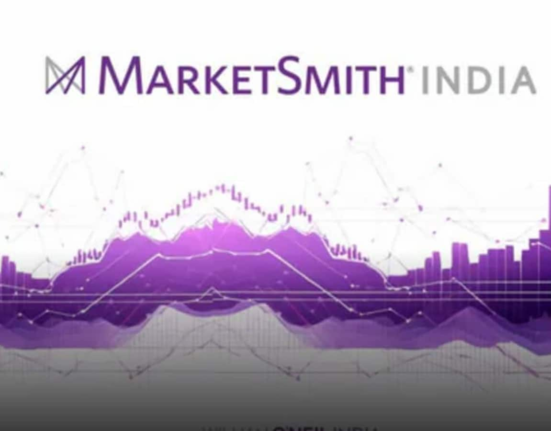When done responsibly, investing can be a great way to grow your money. It comes with risk — which varies based on the investments you choose — but it can also help your savings keep pace with inflation.
Different kinds of investments are accessible to virtually anyone regardless of age, income, risk tolerance, or career. However, these factors may influence which investments are best for you.
🤓Nerdy Tip
Worried about the stock market volatility we’ve experienced this month? Consider when you need the money you plan to invest. If you’re invested for the long term, stock market fluctuations will come and go. However, if you need your money within the next five years, you might gravitate toward the savings account or CD options on our list, which are ideal for short-term savings.
Here are five of the best investments, generally ordered from lowest risk to highest. Keep in mind that lower risk typically also means lower returns, while taking more risk is likely to offer you a better return on your investment over the long term.
5 best investments in 2024
1. High-yield savings accounts
Online savings accounts and cash management accounts provide higher rates of return than a traditional bank savings or checking account. Cash management accounts are like a savings account-checking account hybrid: They may pay interest rates similar to savings accounts but are typically offered by brokerage firms and may come with debit cards or checks.
Best for: Savings accounts are best for short-term savings or money you need to access only occasionally (think of an emergency or vacation fund). Some banks limit savings account transactions to six per month. Cash management accounts offer more flexibility and similar — or in some cases, higher — interest rates.
If you’re new to saving and investing, a good rule of thumb is to keep three to six months’ worth of living expenses in an account like this before allocating more toward the investment products lower on this list.
Where to open a high-yield savings account:
-
A savings account: Online banks tend to offer higher rates than what you’ll get at traditional banks with physical branches.
-
Cash management account: Investment companies and robo-advisors, which are a low-cost, automated service. Robo-advisors such as Betterment and SoFi offer competitive rates on cash management accounts.
Advertisement
|
NerdWallet rating
4.9 /5 |
NerdWallet rating
4.3 /5 |
NerdWallet rating
4.6 /5 |
|
Fees $0 per online equity trade |
||
|
Promotion None no promotion available at this time |
Promotion 1 Free Stock after linking your bank account (stock value range $5.00-$200) |
Promotion Earn up to $10,000 when you transfer your investment portfolio to Public. |
2. Certificates of deposit
A certificate of deposit (CD) is a federally insured savings account that offers a fixed interest rate for a defined period of time.
Best for: A CD is for money you know you’ll need at a fixed date in the future (e.g., a home down payment or a wedding). Common term lengths are one, three and five years, so if you’re trying to safely grow your money for a specific purpose within a predetermined time frame, CDs could be a good option. It’s important to note, though, that to get your money out of a CD early, you’ll likely have to pay a fee. As with other investments, it’s a good rule of thumb to not buy a CD with money you might need soon.
Where to buy CDs: CDs are sold based on term length, and the best rates are generally found at online banks and credit unions.
3. Bonds
Bonds can offer investors a relatively safe form of fixed income. Lower-risk bonds, such as government or corporate bonds, tend to pay lower interest than higher-risk bonds.
Government bonds
A government bond is a loan from you to a government entity (such as the federal or municipal government) that pays investors interest on the loan over a set period of time, typically one to 30 years. Because of that steady stream of payments, bonds are known as fixed-income securities. Government bonds are virtually a risk-free investment, as they’re backed by the full faith and credit of the U.S. government.
The drawbacks? In exchange for that safety, you won’t see as high of a return with government bonds as you might with other investments. If you were to have a portfolio of 100% bonds (as opposed to a mix of stocks and bonds), it would be substantially harder to hit your retirement or long-term goals. (For more, see our long-term investments explainer.)
Best for: Conservative investors who would prefer to see less volatility in their portfolio.
Bonds’ fixed income and lower volatility make them common with investors nearing or already in retirement, as these individuals may not have a long enough investment horizon to weather unexpected or severe market declines.
“Bonds offer a ballast to a portfolio, usually going up when stocks go down, which enables nervous investors to stay the course with their investment plan, and not panic sell,” says Delia Fernandez, a certified financial planner and founder of Fernandez Financial Advisory in Los Alamitos, California.
Where to buy government bonds: You can buy individual bonds or bond funds, which hold a variety of bonds to provide diversification, from a broker or directly from the underwriting investment bank or the U.S. government.
Corporate bonds
Corporate bonds operate in the same way as government bonds, only you’re making a loan to a company, not a government. These loans are not backed by the government, making them a riskier option. And if it’s a high-yield bond (sometimes known as a junk bond), these can actually be substantially riskier, taking on a risk/return profile that more resembles stocks than bonds.
Best for: Investors looking for a fixed-income security with potentially higher yields than government bonds, and willing to take on a bit more risk in return. In corporate bonds, the higher the likelihood the company will go out of business, the higher the yield. Conversely, bonds issued by large, stable companies will typically have a lower yield. It’s up to the investor to find the risk/return balance that works for them.
Where to buy corporate bonds: Similar to government bonds, you can buy corporate bond funds or individual bonds through an investment broker.
4. Funds
Money market funds
Money market mutual funds are an investment product, not to be confused with money market accounts, which are bank deposit accounts similar to savings accounts. When you invest in a money market fund, your money buys a collection of high-quality, short-term government, bank, or corporate debt.
Best for: Money you may need soon that you’re willing to expose to a little more market risk. Investors also use money market funds to hold a portion of their portfolio in a safer investment than stocks or as a holding pen for money earmarked for future investment. While money market funds are technically an investment, don’t expect the higher returns (and higher risk) of some other investments on this page. Money market fund growth is more akin to high-yield savings account yields.
Where to buy money market funds: Money market mutual funds can be purchased directly from a mutual fund provider or a bank, but the broadest selection will be available from an online discount brokerage.
Mutual funds
A mutual fund pools cash from investors to buy stocks, bonds or other assets. Mutual funds offer investors an inexpensive way to diversify — spreading their money across multiple investments — to hedge against any single investment’s losses.
Best for: People saving for retirement or another long-term goal. Mutual funds are a convenient way to get exposure to the stock market’s superior investment returns without having to purchase and manage a portfolio of individual stocks. Some funds limit the scope of their investments to companies that fit certain criteria, such as technology companies in the biotech industry or corporations that pay high dividends. That allows you to focus on certain investing niches.
Where to buy mutual funds: Mutual funds are available directly from the companies that manage them, as well as through discount brokerage firms. Almost all of the mutual fund providers we review offer no-transaction-fee mutual funds (which means no commissions) as well as tools to help you pick funds. Be aware that mutual funds typically require a minimum initial investment of anywhere from $500 to thousands of dollars, although some providers will waive the minimum if you agree to set up automatic monthly investments.
Index funds
An index fund is a type of mutual fund that holds the stocks in a particular market index (e.g., the S&P 500 or the Dow Jones Industrial Average). The aim is to provide investment returns equal to the underlying index’s performance, as opposed to an actively managed mutual fund that pays a professional to curate a fund’s holdings.
Best for: Those with long-term savings goals. They are more cost-effective due to lower fund management fees, and less volatile than actively managed funds that try to beat the market.
Index funds can be especially well-suited for young investors with a long timeline who can allocate more of their portfolio toward higher-returning stock funds than more conservative investments, such as bonds. Young investors who can emotionally weather the market’s ups and downs could even consider investing their entire portfolio in stock funds in the early stages, Fernandez says.
To understand this better, take a look at the performance of the S&P 500 since 1990. An S&P 500 index fund would have sought to replicate these returns:
Stock market data may be delayed up to 20 minutes and is intended solely for informational purposes, not for trading purposes.
Where to buy index funds: Index funds are available directly from fund providers or through a discount broker.
Exchange-traded funds
Exchange-traded funds (ETFs) are like mutual funds in that they pool investor money to buy a collection of securities, providing a single diversified investment. The difference is how they are sold: Investors buy shares of ETFs just like they would buy shares of an individual stock.
Best for: Investors with a long time horizon. Beyond that, ETFs are ideal for investors who don’t have enough money to meet the minimum investment requirements for a mutual fund, because an ETF share price may be lower than a mutual fund minimum.
Where to buy ETFs: ETFs have ticker symbols like stocks and are available through brokerages. Robo-advisors also use ETFs to construct client portfolios.
Customize your weekly reads
Tell us what’s important to you and we’ll curate a list of articles that match your interests.

5. Stocks
Individual stocks
A stock represents a share of ownership in a company. Stocks generally offer a larger potential return on your investment than lower-risk investments, such as government bonds, but also may expose your money to higher levels of volatility.
Best for: Investors with a well-diversified portfolio who are willing to take on a little more risk. Due to the volatility of individual stocks, a good rule of thumb for investors is to limit their individual stock holdings to 10% or less of their overall portfolio.
Where to buy stocks: An easy way to buy stocks is through an online broker. Once you set up and fund a brokerage account, you’ll choose your order type and become a shareholder.
Dividend stocks
Dividend stocks can provide the fixed income of bonds as well as the growth of individual stocks and stock funds. Dividends are regular cash payments companies pay to shareholders and are often associated with stable, profitable companies. While share prices of some dividend stocks may not rise as high or quickly as growth-stage companies, they can be attractive to investors because of the dividends and stability they provide. Keep in mind: Dividends in taxable brokerage accounts are taxable the year dividends occur. Whereas stocks (that do not pay dividends) are primarily taxed when the stock is sold.
Best for: Any investor, from first-timer to retiree, though specific types of dividend stocks may be better depending on where you are in your investing journey.
Young investors, for example, may do well to look into dividend growers, which are companies with a strong track record of consecutively increasing their dividends. These companies may not have high yields currently, but if their dividend growth keeps up, they could in the future.
Older investors looking for more stability or fixed income could consider stocks that pay consistent dividends. Taking the dividends as cash could be a part of a fixed-income investing plan.
Where to buy dividend stocks: Like others on this list, the easiest way to buy dividend stocks is through an online broker.







